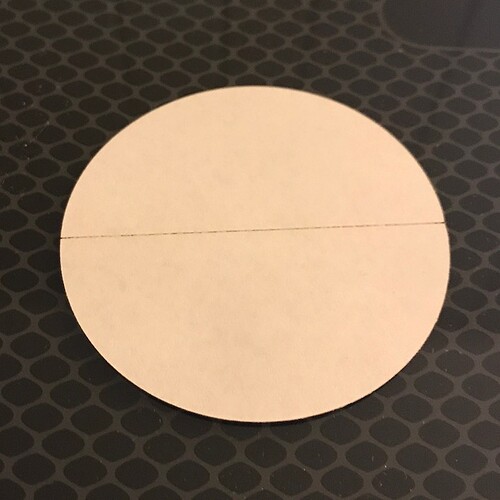This is a continuation of a discussion on another thread on how to get the Glowforge to create fold lines for really thin papers like origami papers.
(Since a couple of non-regularly-posting forum members have asked me about the potential as well, I’m going to post the test here so they’ll see it too, I think they read the highlights.) ![]()
Okay, some of us were thinking that it would be impossible to just crease something as thin as origami paper with the laser, and that it would burn all the way through something that thin. (That did turn out to be the case.)
But in the thread referenced above, someone else suggested creating little micro-perforations by using a very low LPI unfocused engrave, and that did work…with some limitations that I need to mention, and I’ll talk about those afterwards.
Loaded a sheet of standard origami paper with a couple of diagonal lines drawn on the back in pencil. I kept it from blowing around by taping it down. (Worked just fine.)
I then used the Trace function in the Glowforge interface to capture part of those lines for engraving, and did a manual override on the settings to lower the power, increase the speed, adjust the focal point and lower the line density to 35 LPI. (Could have taken it down to 10 LPI - there is one lower setting.)
This is the result - not bad, considering.
And if you flip it over and look at the other side on a light table, you’ll see that there is burn through on the perfs.
Okay, so it can create little dashes, which do make the paper easier to fold, but there are some limitations you need to know about.
First is that the only thing you can do with a raster image (which those hand drawn lines are) is Engrave what the trace picks up. It will color the lines going side-to-side at a certain number of lines per inch. (Why they turned out as tiny dashes instead of dots…the dashes are as wide as the pencil stroke+kerf.)
You cannot convert that kind of image into a Score, which is a vector treatment.
Second - if you try to use a couple of vector lines with a score, it will cut all the way through. (You can’t specify a number of lines per inch on a Score.)
Third, if you try to do an Engrave on a vector line, you might get unexpected results - the interface wasn’t designed to engrave on open vector paths, it will try to fill them in.
So those are the limitations, and the results above are the one option I believe we have. If you fold the paper too many times it will tear, but you can do a light score on it if it’s not too difficult a fold. (Or maybe just do 10 LPI…that will make it a little stronger.)
Note: Outdated after the new Precision Power settings were implemented. You can now score/engrave easily with the lower power ranges.




